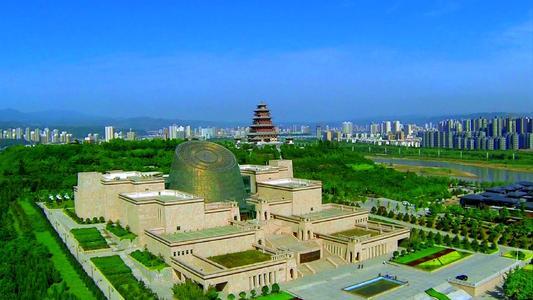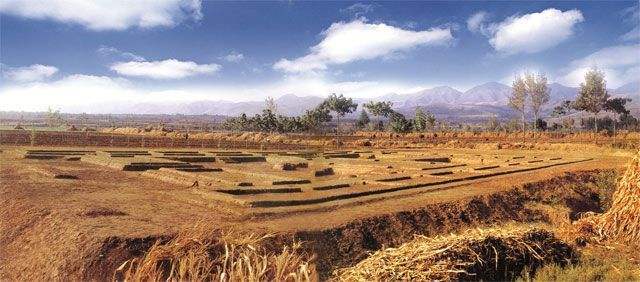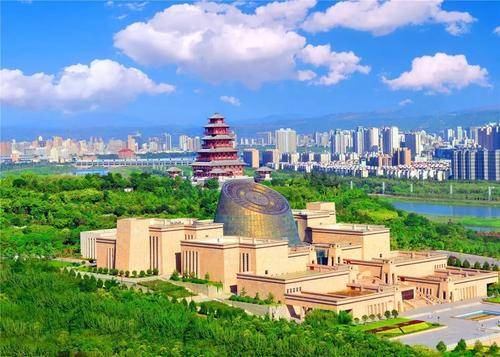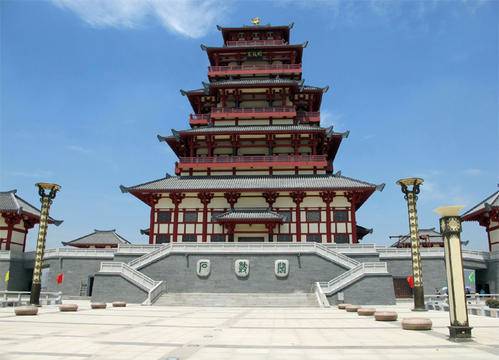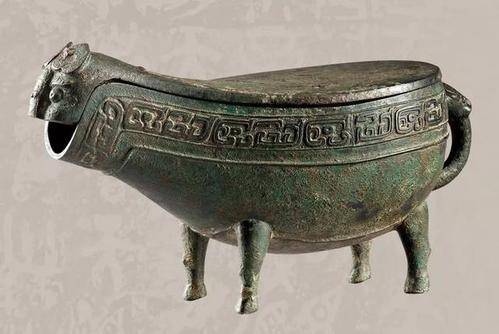Zhouyuan Ruins
The Zhouyuan Ruins have unearthed a large number of oracle bones, oracle shells, and bronzes, and have been listed as a national key cultural relic protection unit by the State Council. Until King Wen of Zhou led his people to migrate to Feng, this was the place where the Zhou people lived.
In the second year of Tang Zhenguan, stone drums were discovered here. The ten stone drums are inscribed with large seal script, small seal script, four-character seal script, and 718 characters, making them the earliest existing stone inscriptions in China. They are regarded by calligraphers of all dynasties as important examples for practicing seal script, earning the title of 'The First Law of Calligraphy.' The 'Stone Drum' poems depict vivid historical scenes of the Qin people's entrepreneurial development, akin to the grand musical epic 'The East is Red' of the Great Qin Empire. The stone drums are renowned as one of the 'Nine Great National Treasures' for their 'National Cultural History,' originally housed in the Palace Museum in Beijing. At the site where the stone drums were discovered, the Zhonghua Shigu Park was built. The park's two iconic structures are the Shigu Pavilion and the Bronze Museum. The Shigu Pavilion is built on Shigu Mountain, and although it is not very high, it seems that the pavilion is not open to the public. The Shigu Pavilion imitates Qin and Han architecture, with an outer five and inner nine-tiered structure, symbolizing supreme authority. The top of the Shigu Pavilion features Baoji's city emblem—the Phoenix Divine Bird. The name of Baoji city originates from the auspicious 'Stone Chicken Crowing' in 757. From here, one can also enjoy a panoramic view of the entire Baoji city, and the view from the pavilion is expected to be even better.
Shigu Pavilion is built on Shigu Mountain. Climbing up the steps is not too high, but it seems that Shigu Pavilion is not open to the public. Shigu Pavilion imitates Qin and Han architecture, adopting an outer five and inner nine tiered structure, symbolizing the supreme power of the emperor. The top of Shigu Pavilion features the city emblem of Baoji - the Phoenix Divine Bird. The name of Baoji city originates from the auspicious 'Stone Chicken Crowing' in 757. From here, you can also overlook the entire Baoji city, and the view from the top of the pavilion is expected to be even better.
Baoji Bronze Ware Museum
Baoji Bronze Ware Museum is actually located within the Baoji China Shigu Garden. It is the only museum in the country named after bronze ware and was just upgraded to a national museum in 2017. Due to Baoji's long history, the museum houses many precious artifacts and is worth visiting. The main building has five floors, with the high platform gate and bronze Houtu located on top, resembling 'Tai Wu Ding'.
Yangjia Village Buried Bronzes
Upon entering the museum, you will discover that many of the bronzes were unearthed from the same location—Yangjia Village. This unremarkable village with bluestone slabs caused a sensation in the national archaeological community upon its discovery. To date, the village has yielded five major archaeological discoveries, including the Yangshao culture of the Neolithic period, Pre-Zhou culture, and Western Zhou culture, especially the Western Zhou culture. Experts have also pointed out that the Yangjia Village site is a microcosm of Western Zhou history. Among the artifacts unearthed in 2003, a total of 372 inscriptions were found, marking the largest number of bronze inscriptions discovered since the founding of the People's Republic of China.
